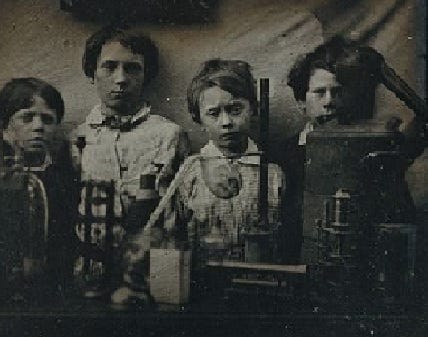ChatGPT Experiment Having Wide Impact
The most successful software release in history has the numbers, is changing how software is developed, how work is done, how money is made in Big Tech
By John P. Desmond, Editor, AI in Business

When OpenAI released ChatGPT in November 2022, it began a grand experiment. Two years later, what is the primary way ChatGPT and other generative AI tools are being used? Here we attempt to take a look at that.
Comedians have found AI language models to be useful for generating a “vomit draft” of their material, that they then add their own human talent to make it funny, according to a recent account in MIT Technology Review.
For the most potentially productive uses of GenAI, such as in code generation and in online searches where it matters to get things right, hallucination is a problem. “Some of the most embarrassing failures of chatbots have happened when people have started trusting AI chatbots too much, or considered them sources of factual information,” stated the author, Melissa Heikkila, senior reporter.
The hype about AI sets expectations too high, she suggests. “It tricks us into thinking AI is a technology that is even mature enough to bring about instant changes. In reality, it might be years until we see its true benefit,” she stated.
Creativity Seen as GenAI’s ‘Killer Use Case’
ChatGPT became the fastest consumer product to reach 100 million monthly active users, achieving it in two months and kicking off an exploration of generative AI innovation. “Creativity is really GenAI’s first ‘killer use case,’“ suggest the authors of a recent account on the blog of New Enterprise Associates, whose business model is to partner with company founders.
Image creation with AI has taken off, with over 15 billion images created from 2022 to 2023, more than the number of photos on Shutterstock. “Massive engagement with AI image generators shows a clear shift towards AI-assisted creativity,” state the authors.
The cost to create content is trending toward zero, with video taking over as the most ubiquitous medium, now representing 82 percent of all consumer internet traffic, according to the NEA authors. Video content represents 20 to 30 percent of all marketing budgets today, they stated.
If you are a programmer, not knowing AI could be bad for your career, or fatal. Microsoft’s GitHub Copilot has won nearly two million paid subscribers since its launch in 2022, contributing toward a 45 percent year-over-year increase in GitHub’s revenue, according to a recent account from PYMNTS.
“When using GPT-3, OpenAI’s first major model, we figured out relatively quickly that it was so good at writing code that we could build a product around this,” stated GitHub CEO Thomas Dohmke in the account. Since the Copilot launch, Amazon, Meta and Google have also built AI assistants for writing and editing code.

Maybe You Get Fired If You Don't Code With GenAI
The coding copilots are seen as having a clear time to value. One company has decided to stop hiring people who code without AI by the end of the year. (It used to be said that nobody ever got fired for buying from IBM; now it can be said that you will be fired if you don’t code with AI.) AI is seen as handling repetitive tasks, freeing up the programmer to be more creative.
“At this point, software engineering without AI is a little bit like writing without a word processor,” stated Code.org CEO Hadi Partovi.
Sergey Brin thinks coders at Google don’t use AI enough. The Google cofounder was quoted in a recent account in AIM from a session at the All-In Summit 2024 held recently in Los Angeles as stating of his developers, “They don’t honestly use the AI tools for their own coding as much as I think they ought to.” (It might be good for the career path of Google coders to heed the advice.)
For IT managers and CIOs charged with overseeing the entire technology stack, where to fit GenAI into the picture needs to be well-considered. Frameworks such as FinOps and technology business management (TBM) can help provide visibility into tech spend, suggested Declan Coombs, a partner for the Cloud & Technology Advisory practice at IBM, in a recent posting on an IBM blog.
FinOps, for example, “gets to the heart” of finance functions and also business strategy and planning functions.
AI Needed To Help Track Spending on AI
An examination of all cloud and technology spending, crossed with TBM he suggests “widens the lens” into overall hardware, software and people costs. “It provides a clearer, more comprehensive view into tech consumption and how that links back to business outcomes. This helps inform where best to invest and how best to deploy technology in ways that are most optimal for the business.”
GenAI requires massive amounts of GPU power, resulting in “sky-high costs” which will mean, “Organizations are going to struggle with demonstrating value,” the author stated, suggesting that a FinOps approach can help keep track and measure ROI.
Approaches to the rollout of GenAI vary company to company; many take a pilot project approach, and some go full-steam ahead into the GenAI future.
P&G Commits to Wide Rollout Strategy for Its ChatPG
Procter & Gamble, for instance, has rolled out its ChatPG GenAI tool to over 30,000 users, as AI upskilling becomes part of the company’s standard onboarding procedure, according to a recent account from Consumer Goods Technology. P&G had 107,000 employees as of June 2023, according to its annual report.
Company executives spoke about the decision to roll out ChatPG to thousands of users quickly, at its annual Signal event held recently. “That was instrumental to learn fast and validate where the value is,” stated Lorenz Maierhofer, a senior director of DataScience GenAI at P&G, “and led us to a company-wide launch within two to three months.”
Within the first two hours of launching ChatPG, the team received 8,000 requests, stated Budi Saputra, a global IT director and GenAI product manager with P&G, a level of interest and excitement that took them by surprise. “It was an extreme amount of effort to understand what and how we approach it, and how we enable others to kind of start piloting these things that don't have reference architecture, reference evaluations, reference governance,” stated Rafal Kawala, AI engineering director. “We had to figure out controls, safety, [and] make sure that P&G data assets are correct.”
P&G decided early on to preserve the flexibility that would enable switching between generative AI models, and not get locked into one specific platform. “Our strategy to be flexible is a recipe for success,” stated Kawala, “and we can firmly say that we're ready for new models, for new tools, for new AI.”
Google lists 185 real-world use cases on its website in categories of agents for customer, employee, creative, data, code and security. A few examples follow.
Customer agents include: Beyond 12, a nonprofit that developed an AI-powered college coach to offer scalable coaching to first-generation students; Justicia Lab is developing an AI assistant to help simply legal processes for asylum seekers and immigrants, offering personalized guidance and suggesting next steps; mRelief has built an AI chatbot to simplify the application process for the SNAP food assistance program in the US; and the Minnesota Division of Driver and Vehicle Services helps non-English speakers get licenses and other services with two0-way, real time translation.
Employee agents include: The US Air Force has built a proof-of-concept portal for searching for published PDFs, completing the project within a 90-day deadline that leveraged tools from Vertex AI Search and Conversation; Bayer is building a radiology platform to assist radiologists with data analysis, search and document creation meeting healthcare requirements for regulatory approval; Home Depot has built Sidekick, an application to help stores associated manage inventory and keep shelves stock; The Los Angeles Rams football team is sign AI for player scouting.
It does not appear there is any going back to pre-GenAI days. Stories will keep coming about how GenAI is being used, how its business model is faring, how the competitive landscape will shape and change. We’ll be watching.
Read the source articles and information from MIT Technology Review, on the blog of New Enterprise Associates, from PYMNTS, from AIM, in a recent posting on an IBM blog, from Consumer Goods Technology and from real-world use cases from Google.





